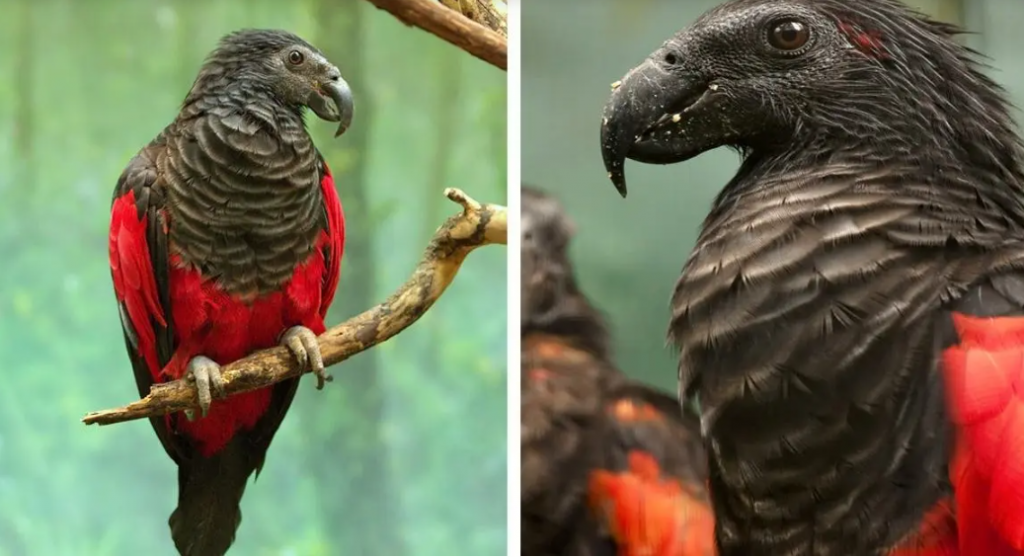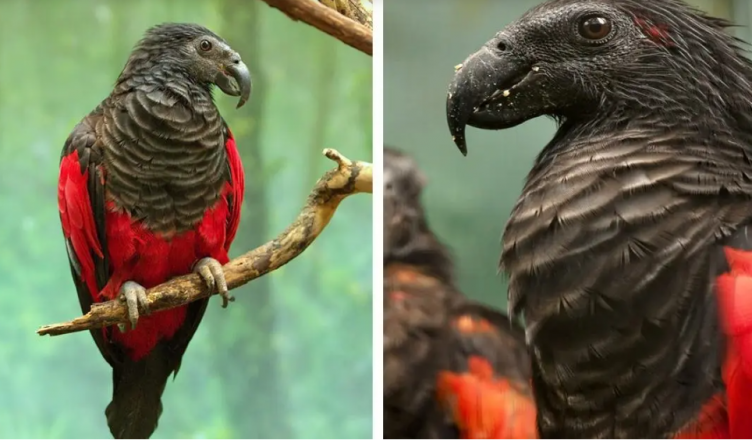In the depths of the jungles of New Guinea, one of the most mysterious and shocking creatures on our planet hides – the Dracula parrot. Its appearance is both admirable and alarming. This mystical feathered predator, whose official name is Pesquet’s Parrot, seems to have come straight from the screens of horror films, embodying all the most mysterious and frightening things that nature has to offer.
Appearance: Nightmare and Attractiveness
The Dracula parrot lives up to its menacing nickname. Its black, like the night sky, feathers and bright red, blood-scarlet spots on the chest and wings evoke associations with a vampire hunting in the dark. The bird’s head is covered with a fluffy, blackish “hood”, giving it an ominous, but at the same time mesmerizing appearance. It seems that this parrot is ready to flap its wings and disappear into the night, like a shadow.

But it’s not just the appearance of the Dracula parrot that makes it so creepy. Its cry is something truly frightening. The sounds this bird makes are reminiscent of ear-piercing creaking sounds, like the noise of ancient creaking doors opening into a gloomy castle. These cries are capable of making anyone who happens to be nearby in the dark jungle freeze.
Habits: Secret Predator
Despite its sinister reputation, the Dracula parrot does not drink blood, as its name might suggest. However, its dietary preferences are also unusual and somewhat dark. Unlike many of its brethren, Pesquet’s Parrot does not eat nuts or seeds, but almost exclusively fruits, especially figs. Its strong beak and powerful legs make it a master of breaking through fruit shells to get to the tasty pulp inside.
These parrots lead a secretive lifestyle. They are rarely seen by humans, which makes them even more mystical. Their isolation makes them look like invisible guardians of the jungle, watching everything from the shadows.

Beauty in the Scary
The Dracula parrot is an example of how nature can combine both fear and admiration. Its exotic and unusual appearance makes it a real natural pearl, but at the same time it remains a symbol of the dark, unknown side of nature. Anyone who has seen it at least once will remember this look for the rest of their life.
It embodies mystery, beauty and inexplicable fear, which makes you wonder: what else is hidden in the dark corners of our planet?
